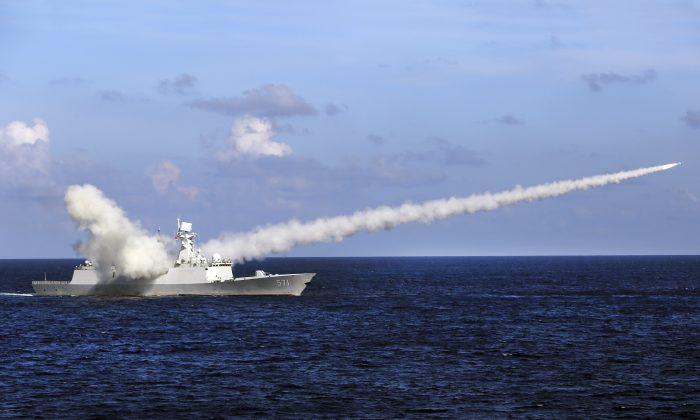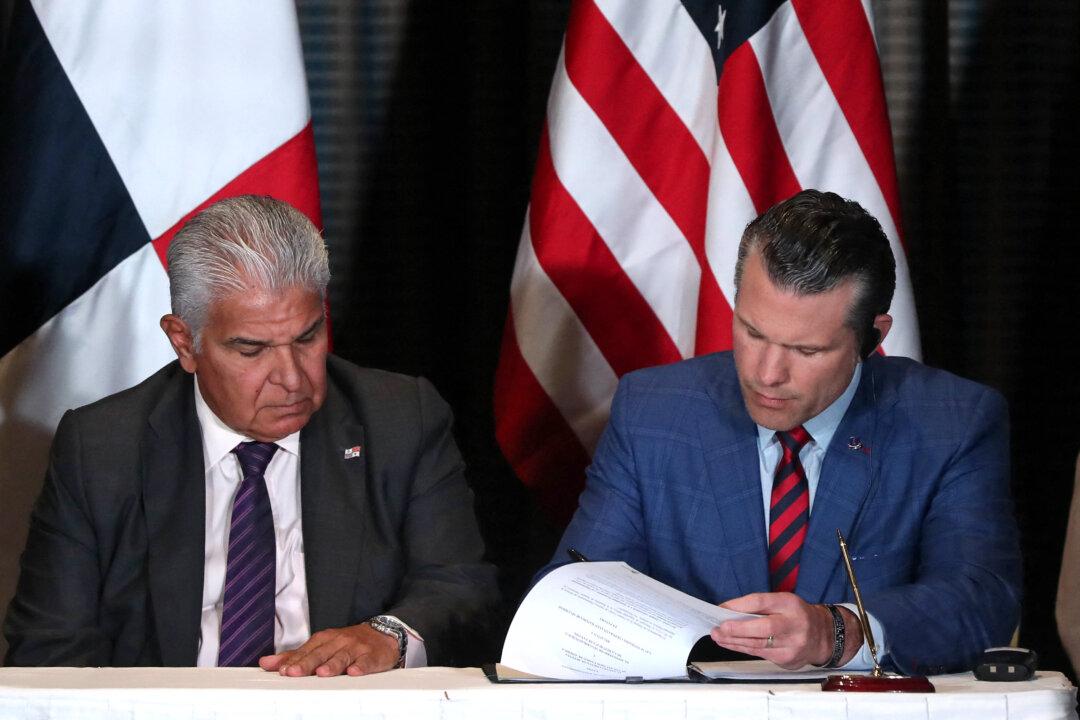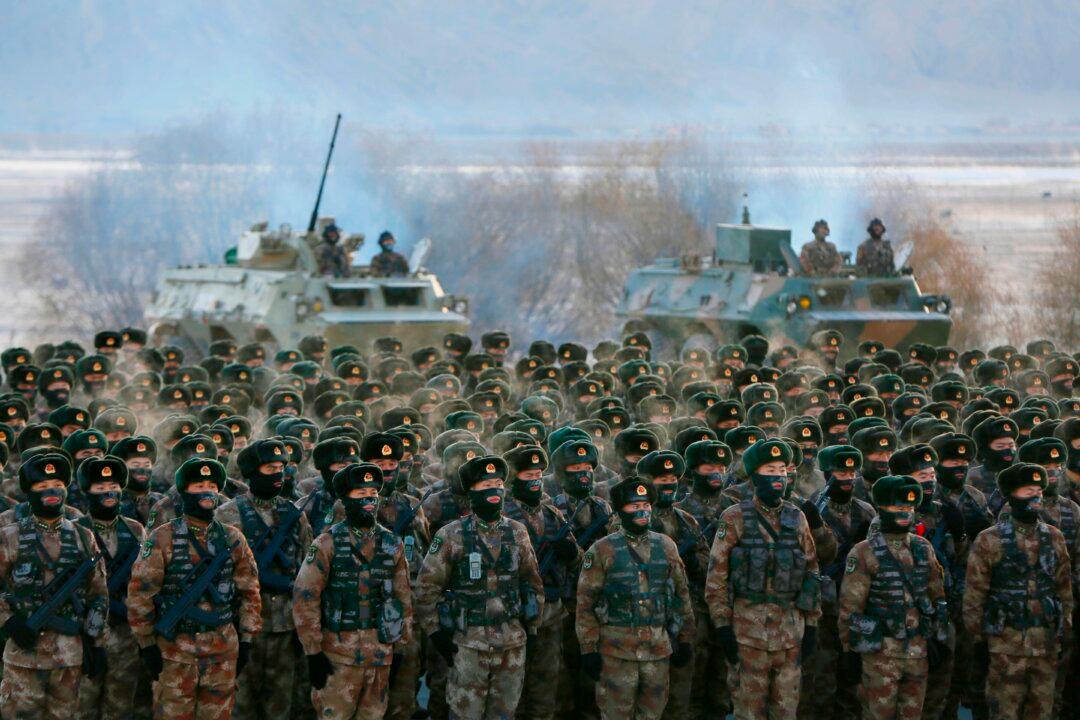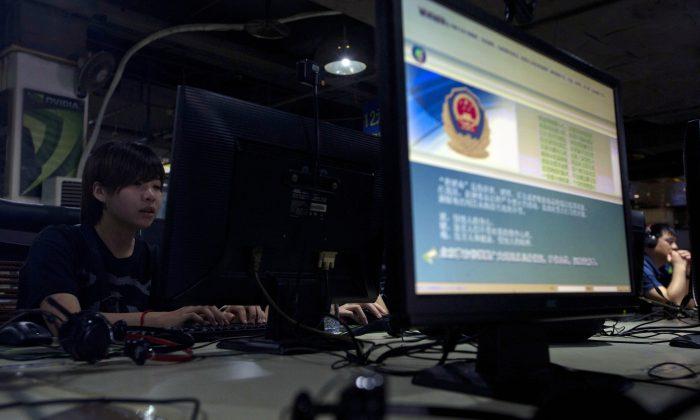The Chinese military is building stronger electronic warfare facilities in the South China Sea.
The facilities serve as protection for the strategic island, on which are based nuclear submarines and future planned aircraft carriers for global power projection. The placement of the facilities near the eastern coast of the island helps Beijing electronically dominate the entire Gulf of Tonkin, located between China and Vietnam, as well as the northern half of Vietnam’s coastline.
“The Mumian facility is home to satellite tracking and communication (SATCOM) platforms and appears to possess systems that could be used in EW,” according to the CSIS authors, who are part of the think tank’s China Power Project and iDeas Lab.
“The site also likely plays a role in collecting signals intelligence (SIGINT), which includes any intelligence gleaned from intercepting and analyzing foreign signals or communication from satellites, radars, weapons platforms, and other electronic systems,” wrote the authors, Matthew P. Funaiole, Brian Hart, and Joseph S. Bermudez. Mr. Bermudez is a senior fellow for imagery analysis with CSIS.
The revelations about the facilities’ recent expansion are from comparing satellite imagery from 2020 to those taken about a month ago. The facilities have apparently operated, according to satellite imagery, since at least 2018.
The new facilities at Mumian could be used to electronically buttress such attacks on U.S. and allied planes, or for the gathering of intelligence.
“Many assets in the vicinity appear dedicated to gathering communications intelligence (COMINT), a subset of SIGINT that includes the collection of communications between individuals and organizations.”
The latest installations include a SATCOM/COMINT complex with “four dish antennas (three 14 meters wide and one 4 meters wide) for SATCOM and tracking, and at least four tall tower antennas suitable for communications or EW,” according to the report.
“Distributed throughout the enlarged facility are at least 90 vehicles and trailers of various types, including a sizeable number featuring mounted antennas (configured as either a single large antenna or two smaller antennas).”
The Chinese military’s expansion of capabilities on Hainan, including EW, is already having negative effects on American pilots in the South China Sea.
According to Rick Fisher, a senior fellow at the International Assessment and Strategy Center, “the U.S. quest for electronic intelligence regarding China’s military buildup on Hainan Island was at the center of the April 1, 2001 ‘EP-3 Incident’ in which a Chinese Naval Air Force J-8II fighter collided with a U.S. Navy EP-3 electronic intelligence gathering aircraft. At that moment, China was in the early stages of building a new nuclear missile submarine base at Yalong Bay on Hainan Island.”

The Chinese military fully disassembled, and presumably attempted to copy, the EP-3’s electronic intelligence capabilities after it was downed.
“China’s People’s Liberation Army has and will continue to constantly upgrade its electronic intelligence (ELINT) and signals intelligence (SIGNIT) capabilities on Hainan Island due to its overall strategic importance for the power ambitions of the Chinese Communist Party,” wrote Fisher in an email.
“Hainan’s security is crucial for the CCP as it protects most of its nuclear ballistic missile submarines, will soon host multiple aircraft carrier battle groups for global power projection, and the Wencheng Satellite Launch Center on Hainan will be key to CCP power projection ambitions to the Moon and Mars.”
Jamie Seidal at news.com.au wrote that China’s “claim appears to relate to a 2018 incident in which [a] US Navy EA-18G Growler aircraft from the aircraft carrier USS Theodore Roosevelt reported jamming of their equipment.”
Instead of public retaliation as a show of strength, the U.S. government apparently just meekly took the blow and allowed American pilots to explain away the aggressive incident.
Pilots “said they were never put in any danger,” according to Seidal.
Grant Newsham, a former U.S. Marines colonel with extensive experience in Asia, commented that the “USA had better get serious about all this—and be ready to hit China hard.”
Newsham said that the Chinese military would “push the limits” just enough “to bother us—and even humiliate us” while disguising and brazenly denying the attack origin.
“Unfortunately, they get away with their denials—or at least we do nothing in response,” he said.
A former Morgan Stanley banker, Newsham advised a correction to the failure by banning “U.S. investment in China for 6 months, or pull Bank of China’s banking license for a year.”
Newsham is right. China’s military expansion and increasing international influence both depend on its economy. So for the United States and allies to maintain a preponderance of power in the coming century requires the rapid deceleration, with the risk of collapse, of China’s growing economy.
The same strategy has been used through major economic sanctions on Russia, Iran, and North Korea.
The pin-prick economic sanctions on China that America has imposed so far are clearly not doing enough and need to be increased to have the necessary effect.





